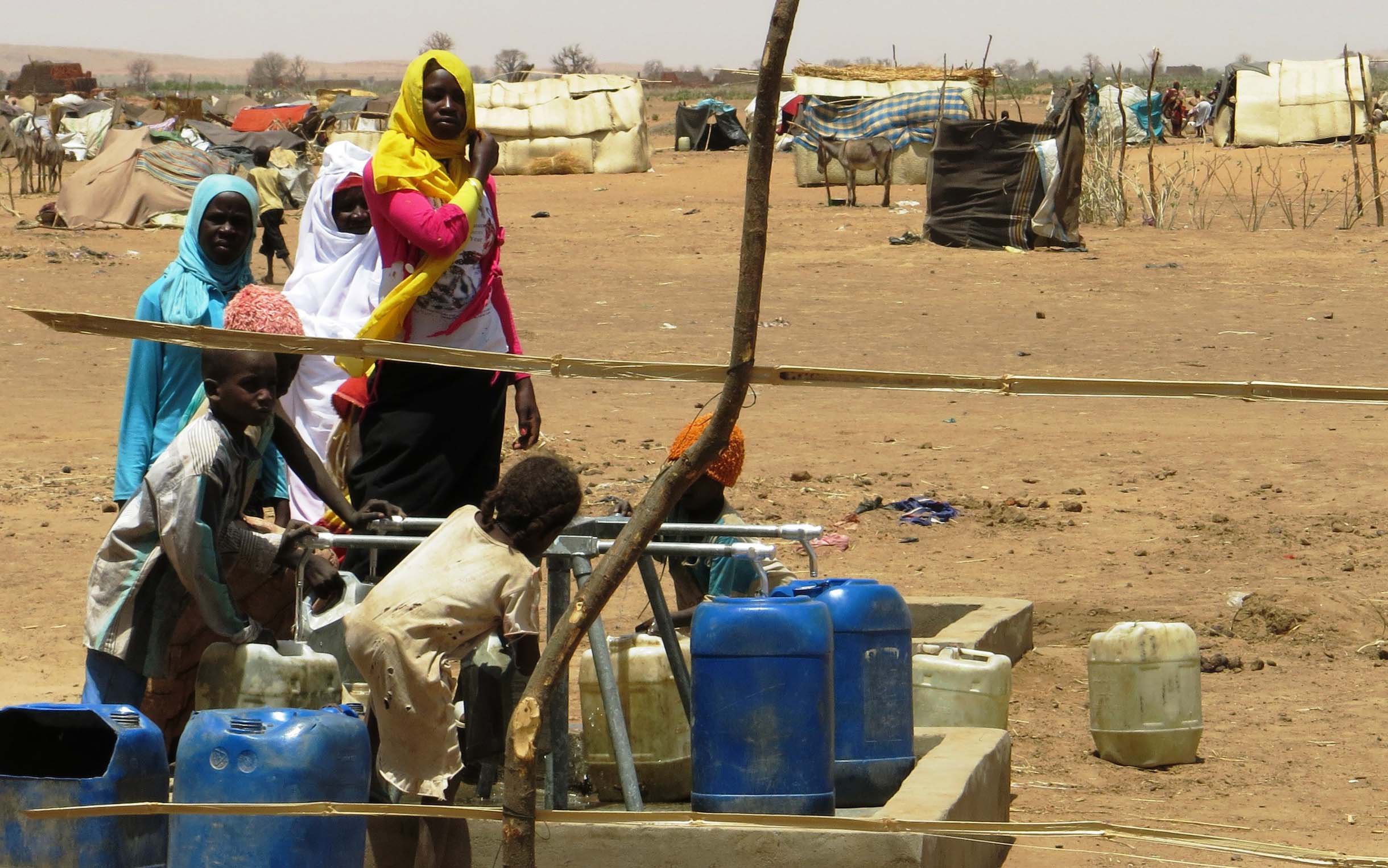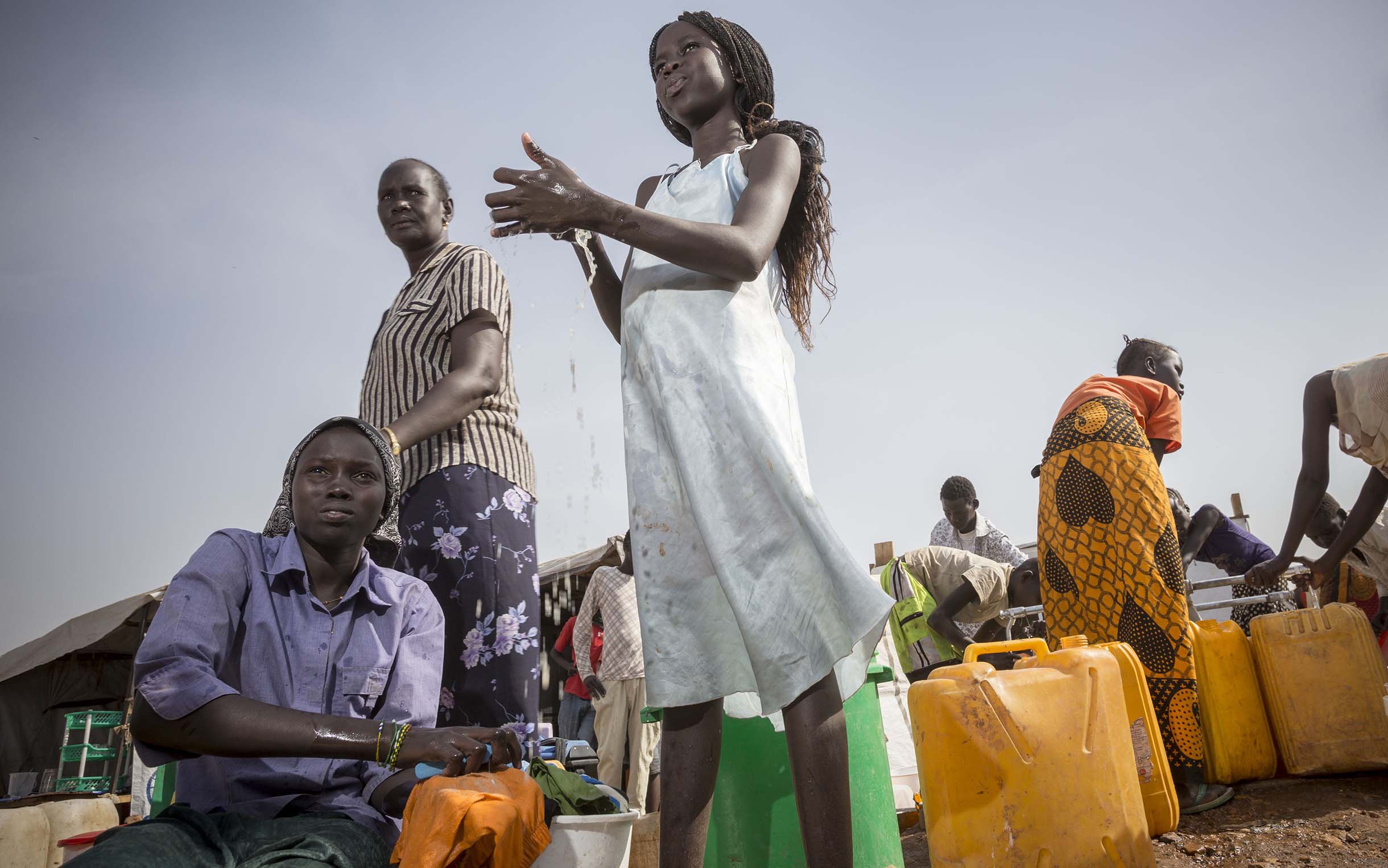Are you confused about what’s going on in Sudan? How about South Sudan? Do you know the difference between the two countries?
Until 2011, they were one country. That year, following decades of civil war, the southern section seceded, becoming one of the world’s newest nations: South Sudan. Here’s a short primer on this troubled region and what Oxfam is doing to help.
Conflict in Darfur, Sudan
Sudan’s western region of Darfur has suffered from decades of political marginalization and economic neglect by successive national governments, leaving an estimated 7.5 million people—almost a quarter of the country’s total population– impoverished
When armed groups in Darfur launched a rebellion in 2003, the government responded with force, and the fighting quickly escalated.
Armed militias, known as Janjaweed, began systematically attacking and destroying villages considered sympathetic to the rebels. In the six years that followed, Darfuris saw nearly 3,000 of their villages destroyed or damaged. In the first 10 years of the conflict, the UN estimated that 300,000 people lost their lives.
Despite the establishment of a transitional government in 2019, the conflict and upheaval aren’t over. In Darfur, 2.9 million people are still displaced and living in camps. To make matters worse, at least 236,000 people were newly displaced in the first few months of 2021 alone, often to places where they lack access to food, water, and basic sanitation facilities and are sometimes denied access to humanitarian actors who could provide for their needs.
Since 2011, the government and rebel forces have also clashed in the states of Blue Nile and South Kordofan—a conflict that has displaced hundreds of thousands from their homes. And refugees have flooded into Sudan, as well, in the wake of recent violence in South Sudan.
Oxfam's historic work in Sudan

Oxfam's emergency response in Darfur scaled up rapidly in late 2003 when the crisis first erupted. Since then, we have worked with partners and displaced communities on programs that have included delivering clean water and sanitation facilities, sharing information about health and hygiene, helping farmers in vulnerable rural areas improve their harvests, supporting women to start small businesses and to improve their families’ nutrition, helping communities protect themselves from climate-related crises, like drought, and helping leaders build peace in their communities.
Our humanitarian work has also focused on people affected by conflict in the border state of South Kordofan, and we have provided assistance to refugees fleeing conflict in South Sudan.
“I was able to speak to some women at the camp. They were just living under a shelter made of fabric and held up with a few sticks,” said Oxfam former humanitarian program manager Sahar Ali after traveling to Darfur to visit a displaced community. “They had almost no food to eat. The stories that they were telling me about how they fled their homes with only the clothes on their back were very painful. They didn’t know how the future would look. We’ll do what we can to help them.”
With a transitional government in place, the prospects for a peaceful future are arguably brighter than they have been in decades, but the root causes of conflict must be addressed and human rights respected so that all the people of Sudan can live in safety and dignity.
Conflict in South Sudan
When South Sudan gained its independence in 2011, ebullience was the mood of the land. But today, violence and extreme hunger have replaced the high hopes its citizens once had.
For more than four years, fighting—coupled with a collapsing economy—has ravaged the country with devastating consequences: 6.3 million people are struggling to get enough to eat. That's 1.3 million more people facing insecurity than when famine was declared this time last year. With swift action, humanitarian aid helped halt famine by the middle of 2017, but the situation continues to rapidly deteriorate across the country.
“In over 30 years working in the affected areas, Oxfam has never witnessed such dire need,” said Noah Gottschalk, a senior humanitarian policy advisor. “People have been pushed to the brink of surviving on what they can find to eat in swamps and so often in a crisis, women and children are those worst affected. We need an end to the fighting so that we can get food to those who urgently need it and provide them with support to rebuild their shattered lives.”
Nearly the size of Texas, South Sudan has abundant oil reserves. Still, most people make their living as subsistence farmers and herders. Because of the conflict, nearly four million people have been forced to flee their homes with two million in neighboring countries, making this the largest refugee crisis in Africa. And with inflation skyrocketing—up to 800 percent a year—many families are struggling to buy even the basics, such as food.
Making things worse, outbreaks of cholera, a deadly waterborne disease, have hit nine of the country’s 32 states: There are now more than 4,700 active cases. As the economy has worsened the cost of buying clean water has increased substantially, forcing many people to resort to unsafe sources.
Oxfam's historic work in South Sudan

Since February 2017 when famine was declared in parts of the country, Oxfam has provided food to more than 360,000 people. Our aim is to meet the urgent needs of the most vulnerable people and to help them build a stronger future. We have seven humanitarian bases across the country as well as a deployable team that can respond to other locations as needed. In addition, we are providing emergency support for many South Sudanese refugees who have fled to neighboring countries for safety.
The provision of clean water and sanitation services—including hygiene promotion—is one of the main activities on which we focus. We drill and repair wells, test and treat water, and train local groups to maintain their own water supplies. We dig latrines in camps and settlements, build hand-washing stations, and distribute hygiene kits. And through home visits and public discussions, we promote knowledge of waterborne diseases and effective ways of preventing them.
We are working with partners in the country, including the World Food Programme, to address the acute and chronic food shortages so many people face. Our goal is to ensure that the most vulnerable people have enough nutritious food while we work with them to improve their means of making a living. Our approach includes direct distributions of food to people, helping them buy livestock or produce their own food, supporting them in their efforts to establish small businesses, and providing them with training and tools.
Oxfam is calling on the transitional government to prioritize humanitarian access so aid can reach those in the greatest need. Warring parties must uphold the ceasefire and bring peace to their people so they can return home, plant and harvest their fields, and resume making a living for their families.
And we are urging that world leaders renew their commitment to the people of South Sudan by ensuring the humanitarian response is fully funded.
